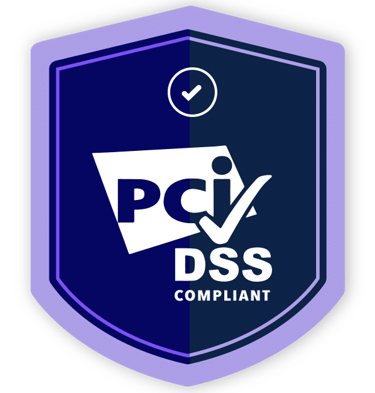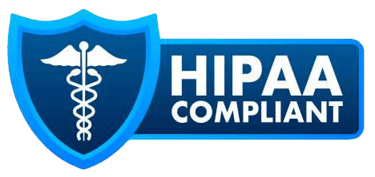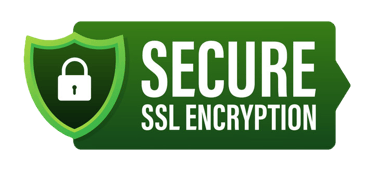How to Write a QAPI Report That Passes Any Survey
A Step-by-Step Guide for Home Health and Hospice Agencies
Every home health and hospice agency is required by the Centers for Medicare & Medicaid Services (CMS) to maintain a robust Quality Assessment and Performance Improvement (QAPI) program. While most agencies have a QAPI plan in place, many fail to demonstrate that the program is active, measurable, and effective when surveyors review documentation.
The difference between a QAPI report that passes a survey and one that doesn’t lies in the details — structure, measurable data, and leadership engagement. This guide explains exactly how to write a QAPI report that reflects compliance, improvement, and accountability, so your agency can stand out during any survey.
Understanding What Surveyors Look For
Surveyors expect to see evidence that your QAPI program is not just a document but a living process. They look for three key elements:
Structure – A clearly defined program with leadership oversight and measurable performance indicators.
Action – Documentation showing that data leads to corrective action and measurable improvement.
Results – Proof that interventions led to sustained positive outcomes.
In short, surveyors want to see that your QAPI program drives quality improvement — not just compliance.
Step 1: Align with the Conditions of Participation
For home health agencies (§484.65) and hospice providers (§418.58), CMS requires that every agency:
Tracks and analyzes key performance indicators tied to quality of care and safety.
Identifies opportunities for improvement based on data.
Implements corrective actions and monitors outcomes.
Documents governing body involvement and accountability.
Your QAPI report must show all these elements in an organized and verifiable way. The surveyor should be able to clearly see how your agency collects data, acts on findings, and evaluates results over time.
Step 2: Organize Your Report Professionally
A strong QAPI report should follow a clear, professional format that’s easy to read and aligns with your agency’s documentation standards.
Cover Page
Include your agency name, the reporting period (for example, “Quarter 1, 2025”), and signatures from the Administrator, Director of Nursing, or QAPI Coordinator. Add the date the governing body reviewed the report.
Executive Summary
Provide a brief overview of the reporting period. Mention major improvements, persistent challenges, key data trends, and next steps. This gives surveyors a quick sense of your agency’s focus and outcomes.
Performance Indicators and Data Summary
Describe the main areas your agency monitors — such as pain control, medication accuracy, infection rates, patient satisfaction, timeliness of visits, and documentation accuracy. Summarize whether performance improved, stayed the same, or declined compared to the previous quarter. Include brief commentary about what contributed to changes and what actions were taken.
Step 3: Describe Your QAPI Projects in Detail
Every agency should conduct at least one Performance Improvement Project (PIP) per quarter that focuses on a specific, data-driven issue.
For each project, your report should describe:
The problem: What issue was identified and why it matters.
The data source: How the issue was recognized (audits, incident logs, patient feedback, etc.).
The root cause: What analysis revealed as the underlying reason for the problem.
The action plan: What interventions or process changes were implemented.
The outcome: What measurable improvement was achieved.
The follow-up: How results will be monitored for sustainability.
Example:
The QAPI team identified a rise in missed nursing visits due to scheduling gaps. After implementing new cross-coverage procedures and staff training, missed visits decreased by 40% in the following quarter. The agency continues to track this indicator monthly to ensure continued improvement.
This type of documentation demonstrates a complete cycle of assessment, intervention, and evaluation — exactly what surveyors want to see.
Step 4: Include Leadership and Governing Body Review
Surveyors always check whether agency leadership is involved in reviewing and approving the QAPI report. CMS expects that the governing body not only receives but also acts upon the information presented.
Include a section titled “Leadership Review and Governing Body Approval” that documents:
The date the QAPI report was presented.
Who attended the meeting (Administrator, Director of Nursing, Medical Director, etc.).
Key decisions or approvals made.
Example:
The governing body reviewed the QAPI report on April 10, 2025. Leadership approved the new infection control initiative and requested continued monitoring of documentation accuracy.
Attach meeting minutes or a signed acknowledgment page to confirm the governing body’s review and involvement.
Step 5: Show Action, Not Just Data
A frequent cause of QAPI-related citations is a lack of follow-up. Many reports identify problems but fail to show what was done about them.
Your report must include proof of action — not just analysis. Describe what corrective steps were taken, when they were implemented, who was responsible, and what results followed.
For example:
After identifying delays in documentation submission, the agency implemented a new electronic reminder system. Compliance improved from 70% to 95% within one month.
Including post-intervention results like this demonstrates accountability and measurable improvement.
Step 6: Integrate QAPI Across All Compliance Areas
A strong QAPI program doesn’t operate in isolation. It should connect with every aspect of agency operations, including:
Infection Control: Tracking infection trends, prevention efforts, and staff adherence to protocols.
Clinical Documentation: Auditing for accuracy, timeliness, and completeness.
Staff Education: Using QAPI findings to guide annual training topics.
Emergency Preparedness: Reviewing outcomes of drills or after-action reports as part of QAPI analysis.
Patient Rights and Complaints: Monitoring grievances and implementing systemic improvements.
When your QAPI report integrates these areas, it becomes a comprehensive picture of how your agency ensures quality and compliance.
Step 7: End with a Forward-Looking Summary
Close your report with a section titled “Summary and Next Steps.”
Briefly restate the agency’s key achievements, challenges, and ongoing initiatives. Identify the focus areas for the next quarter based on your data and leadership priorities.
Example:
The agency achieved measurable improvements in pain management and reduction of missed visits. Documentation compliance remains an ongoing focus. For the next quarter, the QAPI team will initiate a new project aimed at improving physician order turnaround time.
This forward-looking approach shows that your QAPI program is continuous, proactive, and not limited to one reporting cycle.
Step 8: Proof, Review, and Keep It Ready
Before finalizing, thoroughly review your report for accuracy and completeness. Ensure that:
All names, dates, and data points are correct.
Every action item has documented follow-up.
Leadership approval is clearly shown.
The report is stored in both digital and hardcopy QAPI binders for easy access.
Surveyors may ask to see several past QAPI reports, so maintain consistent formatting and clear progression from one quarter to the next.
Common Pitfalls to Avoid
Using vague phrases like “working on it” or “being addressed” without data or follow-up.
Submitting reports without signatures or governing body review.
Recycling the same QAPI topics quarter after quarter.
Listing problems without corrective actions or measurable outcomes.
Omitting integration between QAPI findings and staff training or infection control.
Avoiding these mistakes demonstrates real engagement and attention to detail — key factors surveyors value.
The Benefits of a Strong QAPI Report
Beyond survey readiness, a well-written QAPI report strengthens your entire organization. It helps you:
Improve patient outcomes and safety.
Identify performance trends early and correct them.
Support staff accountability and engagement.
Build credibility with referral partners and accrediting bodies.
Maintain continuous compliance with Medicare CoPs.
An effective QAPI program isn’t just a requirement — it’s the foundation of consistent, high-quality care.
Partner with HealthBridge for QAPI and Compliance Excellence
Writing a QAPI report that passes every survey requires expertise, structure, and a deep understanding of the Medicare Conditions of Participation.
At HealthBridge, we specialize in guiding home health and hospice agencies through the development and management of fully compliant QAPI programs. Our consulting team offers:
Customized QAPI report templates and policy design.
Data-driven performance dashboards and quarterly review tools.
Comprehensive QAPI training for administrators and clinical staff.
Leadership coaching for governing body involvement.
Ongoing mock survey and compliance monitoring services.
HealthBridge helps transform QAPI from a regulatory obligation into a powerful quality improvement system that enhances care, efficiency, and reputation.
Contact HealthBridge today to schedule a consultation and ensure your next QAPI report stands out as a model of compliance and excellence.







